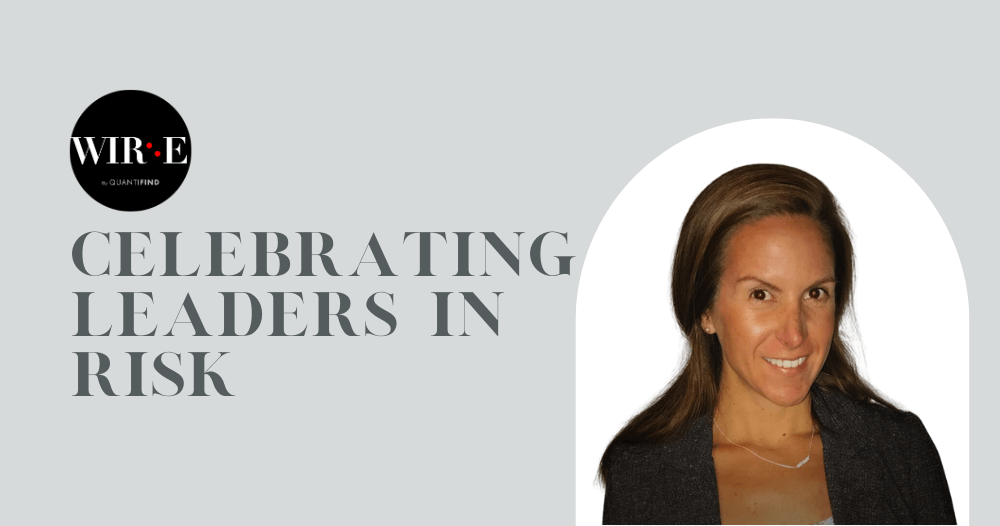As a dedicated professional in risk management, Chrissy Park, Senior Director of Products at Quantifind, brings a unique blend of curiosity, analytical skills, and a passion for problem-solving to the forefront of financial crime prevention.
In this leadership spotlight, we delve into Chrissy’s inspiring career journey, her significant accomplishments, and the lessons learned along the way. She shares valuable insights for aspiring leaders in risk management, particularly women navigating the challenges of a male-dominated industry.
Let’s dive into how she is shaping the future of risk management and making strides in the fight against financial crime.
What inspired you to pursue a career in risk, and how has your journey evolved to address the growing challenges of financial crime?
My interest in this field likely stems from my natural curiosity and love for solving puzzles. The work is complex, involving the management of regulatory requirements and using data to detect patterns and risk signals in financial crimes. On top of that, there’s the ongoing challenge of identifying new patterns as products, banking methods, and criminal behaviors evolve. Despite these challenges, I remain motivated and inspired because I know my work makes a positive difference. At Wells Fargo, I developed the first model to detect financial patterns potentially linked to human trafficking, contributing to the broader efforts of government agencies and law enforcement to combat this heinous crime. Now, at Quantifind, I continue to support this initiative through our partnership with the Polaris Project.
Can you share a significant achievement in your career that had a direct impact on mitigating or preventing financial crime risks?
In 2017, I was honored to be nominated for the FBI’s Citizens Academy in Portland, Oregon, an outreach initiative connecting the FBI with local community leaders. The program provided valuable insight into their investigative focus areas, including organized crime, corruption, and cybercrimes. This enhanced understanding of the financial crime lifecycle contributed to developing upstream models and solutions that identify risk signals. These solutions lead to SAR submissions, which are ultimately used by the FBI in their investigations. This experience, and its direct impact, exemplify why Quantifind prioritizes building partnerships. Collaborating with customers, government agencies, law enforcement, and non-profits like United for Wildlife is key to achieving success in crime prevention.
How have technological advancements, like AI and data analytics, influenced your approach to support the mission of combating financial crime risks?
Like previous industrial advancements, AI brings both opportunities and risks. One key risk for compliance programs is not maintaining sufficient human oversight. Relying solely on automation can increase the chances of AI bias or machine mistakes affecting decisions. This concern is a driving force behind Quantifind’s dedication to upholding responsible ethics in AI technology.
On the opportunity side, AI can enhance solution design by increasing precision, reducing false positives, and automating time-intensive, non-critical tasks. I think the ideal balance for compliance programs is to leverage AI for efficiency gains in low-risk areas and reinvest the saved resources into multiple layers of defense and human expertise positioned where they add the most value.
What advice would you give to women aspiring to lead in risk roles?
I try to approach most challenges as opportunities for growth. Shifting your perspective on the barriers women face in the workplace can help you expand your skill set. For instance, if you notice that male colleagues communicate differently with you compared to their male peers, reflecting on this could lead to improved team-wide communication. If that feels too passive, a more active approach would be to strengthen your network of women professionals. I’m proud to have been a founding member of Women in Risk (WIRE) to foster connections between talented, passionate women in the field. Whether you join our WIRE community, start a similar initiative at your organization, or connect with inspiring women on LinkedIn, building a supportive network can offer valuable advice during tough times and create pathways to future opportunities in risk roles.
What are some of the biggest challenges you’ve faced as a woman in risk, and how have those experiences shaped your leadership?
Like many women in male-dominated industries, I’ve encountered biases towards me and my work. These often come in the form of stereotypes—assumptions about skills I supposedly lack or those I’m expected to excel at. Apart from the workplace, stereotypes can also influence perceptions of personal life choices, including family decisions and caregiving responsibilities These unconscious biases can sway hiring decisions, limit advancement opportunities, and shape workplace culture. These experiences taught me an important lesson that helped shape my leadership style: I became committed to avoiding unconscious bias in my own management approach. I focused on giving individuals the space to showcase their skills and goals while fostering a culture of diversity and inclusion across the entire team.
